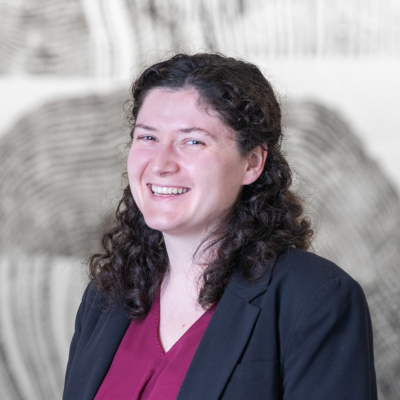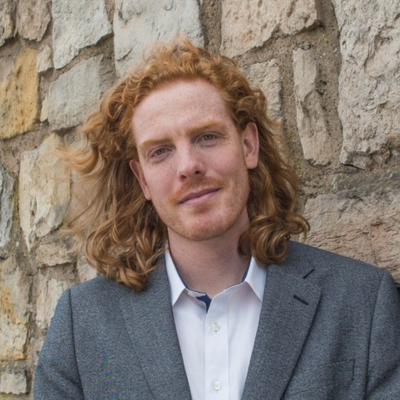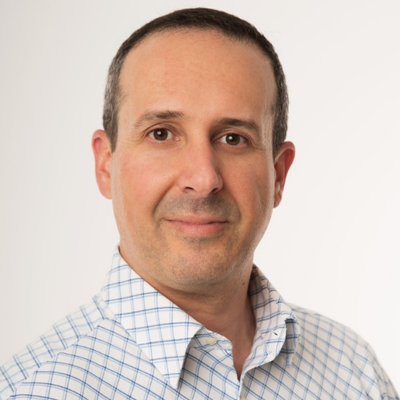What are you and your organization doing to help reduce embodied carbon emissions?
Mary Roggenbuck
Building Performance Engineer, Mortenson
Growing up on my family’s farm in western Minnesota, where we composted and lived off the land, I learned to live as a part of nature. As I went through school, I joined the Green Team that taught people in the community how to save electricity and started a composting program at the high school. While attending the University of Dallas, I continued advocating for sustainable practices on my campus and eventually took up architecture coursework focused on sustainable design.
I joined Mortenson’s Building Performance Team after graduating from the University of Minnesota with my master’s in architecture. In my role, I further Mortenson’s corporate carbon and waste reduction initiatives for our national office locations and work with our teams to reduce the environmental impact of our projects from construction through the buildings’ operational lives. As building systems have progressed to reduce energy use and the electric grid gets cleaner, the embodied carbon of buildings will play an increasingly significant role in carbon emissions from the built environment. Because of this, I continually expand my knowledge about how to reduce these upfront carbon emissions. By finding alternatives and making suggestions for reuse and building less, we will continue on this journey to lower carbon attributed to the built environment.
Mortenson’s Corporate Social Responsibility commitment includes three pillars, with “Planet” emphasizing our desire to preserve the environment for future generations. Actions to further this goal include signing the Contractor’s Commitment, an effort to measure a general contractor’s firm-wide sustainability. Under this framework, we focus on criteria including project carbon reduction, jobsite wellness, jobsite waste and water management practices, and building material selection on projects spanning states and markets. As we collaborate with other general contractors to understand our industry’s impact on the built environment and pilot new sustainable building practices, we will improve these metrics and further our collective impact.

“As building systems have progressed to reduce energy use and the electric grid gets cleaner, the embodied carbon of buildings will play an increasingly significant role in carbon emissions from the built environment. … By finding alternatives and making suggestions for reuse and building less, we will continue on this journey to lower carbon attributed to the built environment.”
What are you and your organization doing to help reduce embodied carbon emissions?
Jay Arehart
Co-Founder, Preoptima
Assistant Teaching Professor, University of Colorado Boulder
I spent multiple summers during undergrad in Bolivia building pedestrian bridges over rivers that were impassable during the rainy season. It was during this time that I learned about how many Bolivians were becoming climate refugees. While I knew that I could become a structural engineer and minimize the embodied carbon of the systems I designed, I felt that it would be too incremental of an impact to help the people who would be most affected by climate change. Thus, I shifted my focus to becoming a teacher so that I can empower students and professionals to design low-carbon buildings. And for the past 8 years, I have been working on the embodied carbon problem from a couple of different angles.
I’m currently working with three organizations to help reduce the embodied carbon of buildings. I am a co-founder and chief product officer of Preoptima, a small startup building software to help design teams, developers, and code officials assess and reduce embodied carbon during the early stages of design. Our software enables rapid embodied carbon assessments so that the carbon implications of design decisions can be assessed to ensure that targets are met. Our first product, Preoptima CONCEPT is launching in early January of 2024.
I am also a teaching professor in architectural engineering at the University of Colorado Boulder. I weave topics of embodied carbon into undergraduate courses in addition to teaching graduate level courses on the topic of embodied carbon. I also offer courses on sustainable building design. The goal I have for my students is that they can join any design firm of construction company and hit the ground running accounting for and reducing embodied carbon. I am in the process of developing shorter, online courses and in-person workshops for professionals interested in earning an embodied carbon credential. In addition to teaching, I have a couple of ongoing research projects focused on how dynamic LCA can provide more detailed embodied carbon assessments.
And lastly, I am a co-chair of the Structural Engineering Institute (SEI) Sustainability Committee. Currently, our biggest focus is to develop a Prestandard that will create the standard of practice for assessing the embodied carbon of structural systems in buildings. Aimed to be published in the middle of 2024, the Prestandard will support the SE 2050 initiative and structural engineers everywhere in standardizing how to assess embodied carbon.

“ The goal I have for my students is that they can join any design firm of construction company and hit the ground running accounting for and reducing embodied carbon. I am in the process of developing shorter, online courses and in-person workshops for professionals interested in earning an embodied carbon credential. In addition to teaching, I have a couple of ongoing research projects focused on how dynamic LCA can provide more detailed embodied carbon assessments.”
What are you and your organization doing to help reduce embodied carbon emissions?
David Gonzalez
LEED Green Associate and Low Carbon Materials Ambassador, DCC Solutions
My introduction to the world of green buildings stems from a medical issue that occurred with my child 10 years ago. Since we spend over 90% of our time indoors, this challenging family event was a trigger which pushed me to learn what I could about the ingredients that comprise the construction materials we use in our homes. This became a journey that helped me develop a keen interest in healthy and eco-friendly building products.
In the last decade, I have attended trainings, seminars, exhibitions and have read numerous documents, articles and books on green building principles. I quickly discovered how many toxic components and products are present in the buildings we spend most of our time in.
Following a 16 year tenure in the concrete industry, I had the opportunity to obtain my LEED title in 2019 and chose to transition my career shortly thereafter. I’m now able to align my personal values with my professional ambitions and share my insights and knowledge on how environmentally friendly, healthy and low-carbon building materials can contribute in making a positive impact on people’s lives, the environment and the construction industry.
Today, I’m an accredited LEED® Green Associate™ and a low carbon building materials ambassador for DCC Solutions, a Quebec based company that is the exclusive distributor of the fermacell® family of soundproofing products in Canada.
I am fortunate to be part of a dedicated team, who’s mission is to help construction professionals obtain optimal acoustical performances for the soundproofing of buildings with our “cement free” floor boards which are non-toxic, ecological and have a very low carbon footprint.
In summary, we replace the wet concrete topping in the floor assembly with a dry floating panel system that is just as effective from a soundproofing point of view but with 66% to 75% less weight imposed on the structure and without using high embodied carbon materials like cement.
Our gypsum fiber panels store more carbon than they emit at the production stage, therefore allowing us to offer a simple, sustainable, effective and time tested solution to lower the carbon footprint and environmental impact of any project.
I’m grateful to be able to contribute in the combined effort in addressing the challenges facing the construction industry in order to tackle climate change.

“I’m now able to align my personal values with my professional ambitions and share my insights and knowledge on how environmentally friendly, healthy and low-carbon building materials can contribute in making a positive impact on people’s lives, the environment and the construction industry.”